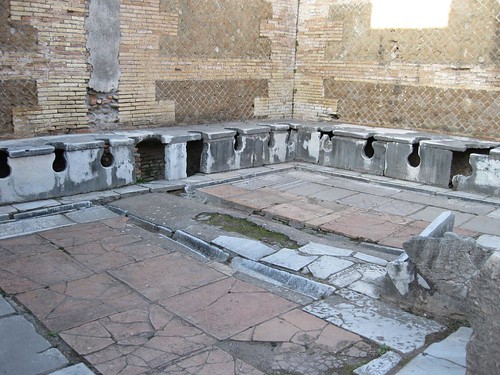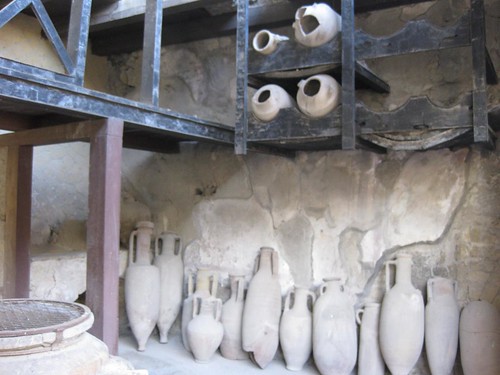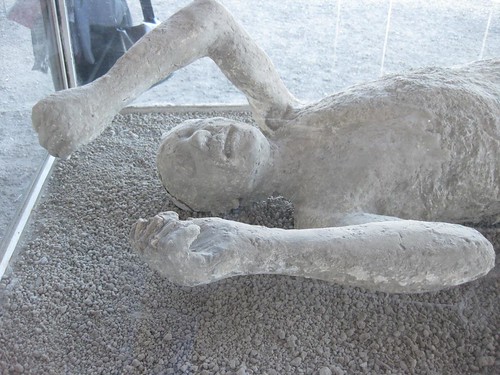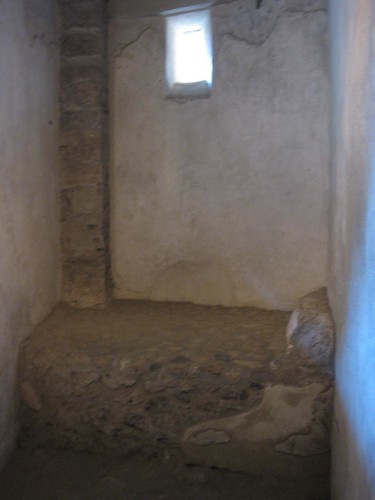
This shot shows how large it was, as well as an old piece of column used to fill a hole. This road is still in use today, but I picked Sunday to visit it since it is close to cars. The place was virtually deserted, and we had the entire Circus of Maxentius to ourselves.
In the second half of the day we took a lightrail train to Ostia Antica. Let me just get on my soap box for a minute and say we need better public transportation. Drivers in Rome are insane, and there is no way I'm going to jump into that fray. Fortunately for me, all I have to do is to be able to read a train schedule and tell time. OK, I'm done. Back to Ostia Antica, which was the main port city of Rome in the early part of the empire. It died a slow death due to Tiber river silting in its port, followed by an outbreak of malaria. It pretty much got covered in dirt and forgotten about.

You can check my flickr page for more shots of it. The one I'm posting here is an example of a latrine from Ancient Roman times! I'll admit that the atmosphere is less private, but the indoor plumbing always blows me away.
The preservation of Ostia Antica is excellent, but it died a slow death and became a ghost town. The next day we had Herculaneum and Pompeii, which were buried by the eruption of Mount Vesuvius. I had been to Pompeii before, but Herculaneum was all new to me. I expected quite a bit of preserved fresco, but was absolutely blown away by both the preservation of Herculaneum and how much they let you in to each structure. It was also much less crowded than Pompeii turned out to be, and that really did affect my enjoyment.

In this Photo you can see actual wood preserved in the mud that flooded the place right after the volcano blew. That's right, actual wood from Roman times!
Naples is conected to towns all down the coast to Sorrento including the two excavated sites. A quick train ride brought us right to Pompeii. Pompeii doesn't offer the same level of access as Herculaneum, but makes up for it in sheer size and scale. It also has some gruesome reminders of how these people perished.

Pompeii was subject to poisonous gas, and then buried in volcanic ash. Over two thousand people died, though most got out. Early on in the excavations they discovered empty pockets where people had been buried, with their skeletons and any jewelry still intact within them. With many, plaster was poured in, and the entire figure preserved. This is one of the few places whose ghosts you can actually see at their moment of death.

On the lighter side, they certainly seemed to have a good time while they were alive. There were tons of fast food places as well as several brothels. This is a bed from one of the preserved brothels. Doesn't look too comfy anymore, does it.
This made a really interesting end to our time in Rome, and the following day we took an early morning train to Venice.
No comments:
Post a Comment